By Liz Busby
This is the fourth of a five-part series on Mormon speculative fiction.
In the last post, we briefly discussed a list written by Sandy and Joe Straubhaar in Sunstone in 1981 of possible overlapping themes between Mormonism and speculative fiction. Now we’re going to explore these themes in the most prevalent type of Mormon science fiction and fantasy, that is books written by Mormons without Mormons in them. It has been widely noted that Mormons seem to have exploded into the science fiction and fantasy markets. (See an exploration of the phenomenon in this article in Mormon Artist with some great insight added in the comments section).
The connection between speculative fiction and religious conversations seems natural to me. I grew up in a family where speculative fiction was religious fiction. Of course, there were the obvious choices like The Chronicles of Narnia and even A Wrinkle in Time. But even seemingly secular books like Harry Potter or Ender’s Game were often fodder for family night discussions and church talks. Even Elder Uchtdorf has gotten in on the game with his October 2019 conference talk based around The Hobbit, so I think the segment of Mormons who think this way about their fiction is not small. Seeking after truth, wherever we find it, is part of our culture.
Obviously, I cannot cover all the possible ways Mormon speculative fiction authors are influenced by Mormon questions in their work. Nor can I list every Mormon sci-fi/fantasy author here. For that, you might start with the Mormon SF Bibliography database. Although the database has not been maintained since 2014, it is comprehensive up to that point. (Perhaps someone needs to take up the flag on this work? Call me.) What I can do is cover three ways that I think an otherwise mainstream speculative fiction work by a Latter-day Saint can converse with Mormonism in productive ways. In this post, I will propose some possibilities for literary analysis, few of which I believe have been fully explored in writing. (Send me articles if I’ve missed them. Please!) The analysis here will be a shallow survey of what I think is a deep lake of possibilities. (And a lot of them will come from Brandon Sanderson’s work because of personal bias. Sorry, not sorry.)
In Conversation with Mormon Culture
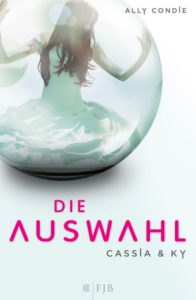 First, we might look at how a book is influenced by the Mormon culture of the author. I see this most strongly in the proliferation of books dealing with the marriage pressure in Mormon culture. For example, Ally Condie’s Matched trilogy is, I think, heavily influenced by the dating culture of BYU and Mormonism in general. In Matched, a dystopian society matches everyone with their perfect mate at age 16. This kind of pressure to find “the one” and be committed immediately is definitely a less-than-healthy aspect of BYU student culture, and Mormon young adults are constantly grappling with the idea of soul mates (perhaps sparked by the popularity of Saturday’s Warrior). Condie’s trilogy explores the tension between this idea and the principles of agency and choice, also important ideas in Mormonism. In an interview with Mormon Artist, Condie said that her LDS faith influenced the book “in that the book focuses very heavily on the themes of free agency and choice and accountability.”
First, we might look at how a book is influenced by the Mormon culture of the author. I see this most strongly in the proliferation of books dealing with the marriage pressure in Mormon culture. For example, Ally Condie’s Matched trilogy is, I think, heavily influenced by the dating culture of BYU and Mormonism in general. In Matched, a dystopian society matches everyone with their perfect mate at age 16. This kind of pressure to find “the one” and be committed immediately is definitely a less-than-healthy aspect of BYU student culture, and Mormon young adults are constantly grappling with the idea of soul mates (perhaps sparked by the popularity of Saturday’s Warrior). Condie’s trilogy explores the tension between this idea and the principles of agency and choice, also important ideas in Mormonism. In an interview with Mormon Artist, Condie said that her LDS faith influenced the book “in that the book focuses very heavily on the themes of free agency and choice and accountability.”
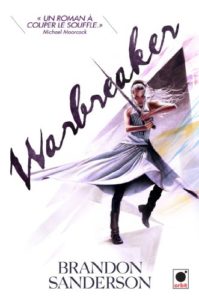 We can see this same obsession with marriage in Brandon Sanderson’s works. Plenty of fans have noticed the prevalence of arranged marriages in his books, including the central plot in Warbreaker where princess Siri is sent to marry the God King of a neighboring kingdom in place of her sister. While Mormon culture may not have actual arranged marriages, these situations have many resonances with the Mormon experience of marriage, often young and quick. Neither Siri nor Susebron (the God King) know exactly what to do on their wedding night, a storyline which is perhaps the most frank fictional discussion of what is probably a common LDS experience.
We can see this same obsession with marriage in Brandon Sanderson’s works. Plenty of fans have noticed the prevalence of arranged marriages in his books, including the central plot in Warbreaker where princess Siri is sent to marry the God King of a neighboring kingdom in place of her sister. While Mormon culture may not have actual arranged marriages, these situations have many resonances with the Mormon experience of marriage, often young and quick. Neither Siri nor Susebron (the God King) know exactly what to do on their wedding night, a storyline which is perhaps the most frank fictional discussion of what is probably a common LDS experience.
In Conversation with Mormon Doctrine
Next, let’s discuss how speculative fiction can be in conversation with Mormon doctrine. Obviously, almost any Mormon author could be included in this section. I’ve already talked about how Card’s The Worthing Saga is perhaps the most Mormon book I’ve ever read, so I’ll move on to a few other obvious possibilities.
 I see Dan Wells’ I Am Not A Serial Killer series as an infinite expansion on the dilemma of Nephi and Laban. The main character John Cleaver is a psychopath who fights hard to maintain his humanity by ground rules that keep him from turning into a monster. However, when real (supernatural) serial killers show up in his town, he is faced with breaking his personal rules in order to protect those he loves. Again pulling from Mormon Artist, Wells said “The John Cleaver books were about a teenage sociopath fighting a demon, but they ended up being a perfect allegory of ‘the natural man is an enemy to God,’ and our struggle to fight against our baser natures—not because I wrote it that way on purpose, but because my beliefs crept in there subconsciously.” It could also be fruitful to look at the careful balancing of ethical factors and how they affect the murderer himself in an LDS context.
I see Dan Wells’ I Am Not A Serial Killer series as an infinite expansion on the dilemma of Nephi and Laban. The main character John Cleaver is a psychopath who fights hard to maintain his humanity by ground rules that keep him from turning into a monster. However, when real (supernatural) serial killers show up in his town, he is faced with breaking his personal rules in order to protect those he loves. Again pulling from Mormon Artist, Wells said “The John Cleaver books were about a teenage sociopath fighting a demon, but they ended up being a perfect allegory of ‘the natural man is an enemy to God,’ and our struggle to fight against our baser natures—not because I wrote it that way on purpose, but because my beliefs crept in there subconsciously.” It could also be fruitful to look at the careful balancing of ethical factors and how they affect the murderer himself in an LDS context.
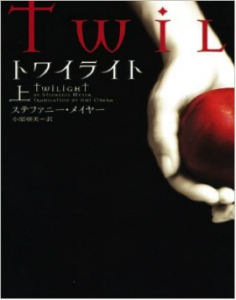 One might argue that some of the intensity of the relationships in Stephenie Meyer’s Twilight Saga reflect the utter seriousness of the Mormon dating scene. But equally, we might see it as an exploration of eternal marriage and what you do with eternity. Obviously, exploring eternity through vampires is not a uniquely Mormon trope, but perhaps it explains why Meyer’s vampires seem to be focused on establishing one eternal relationship rather than creating the traditional harem of thralls. Jana Riess explored these themes in a BYU Studies article, and even non-Mormons have gotten in on the game of interpreting the story through a Mormon lens.
One might argue that some of the intensity of the relationships in Stephenie Meyer’s Twilight Saga reflect the utter seriousness of the Mormon dating scene. But equally, we might see it as an exploration of eternal marriage and what you do with eternity. Obviously, exploring eternity through vampires is not a uniquely Mormon trope, but perhaps it explains why Meyer’s vampires seem to be focused on establishing one eternal relationship rather than creating the traditional harem of thralls. Jana Riess explored these themes in a BYU Studies article, and even non-Mormons have gotten in on the game of interpreting the story through a Mormon lens.
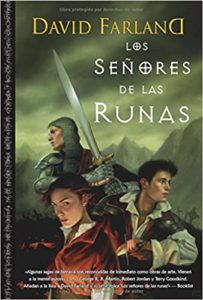 Another author that shouldn’t be left out is Dave Wolverton/David Farland. I can’t speak to his books personally, having not read them (they’re on my TBR pile!). But I understand that his Runelords series deals heavily with the idea of consecration. In an interview with Third Hour, Farland said, “I’ll be in Sunday school or something like that and someone will say something that relates to my current book in progress and I go, ‘Oh yeah, this is going to change the plot so I can get that principle across.'” I was unable to find anyone writing about Dave’s books in relation to Mormonism back in 2008, and still cannot find any strong work on it today. Obviously, I need to cure my ignorance quickly.
Another author that shouldn’t be left out is Dave Wolverton/David Farland. I can’t speak to his books personally, having not read them (they’re on my TBR pile!). But I understand that his Runelords series deals heavily with the idea of consecration. In an interview with Third Hour, Farland said, “I’ll be in Sunday school or something like that and someone will say something that relates to my current book in progress and I go, ‘Oh yeah, this is going to change the plot so I can get that principle across.'” I was unable to find anyone writing about Dave’s books in relation to Mormonism back in 2008, and still cannot find any strong work on it today. Obviously, I need to cure my ignorance quickly.
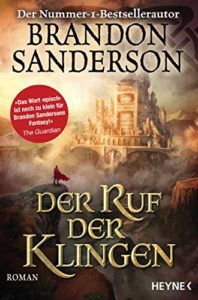 Another interesting doctrinal/historical angle to look at is the plot line of religious restoration in Brandon Sanderson’s Stormlight Archive. Dalinar Kholin, uncle to the king, begins receiving strange visions from God that contradict the established teachings of the dominant Vorin church. At the height of its power, the church has scrubbed and changed history to better conform with its doctrine. Dalinar eventually commits heresy against the church and is thrown out, partly due to an unorthodox marriage. There are echoes of Mormon history and the doctrine of the restoration all across this plotline. And because it is not actually about LDS history, Sanderson is free to explore all sides of belief in a way in difficult in a historical novel, which tend to come down firmly either on the church-is-true side or the everyone-is-being-deceived side. Sanderson includes characters from across the spectrum of belief: Navani as the orthodox believer, Kaladin as the agnostic, Jasnah as the atheist, Shallan as the naive. The parallels aren’t perfect (this is not a Lewis-ian allegory), but reading the story in this light is a fruitful line of questioning for Mormon literary scholarship.
Another interesting doctrinal/historical angle to look at is the plot line of religious restoration in Brandon Sanderson’s Stormlight Archive. Dalinar Kholin, uncle to the king, begins receiving strange visions from God that contradict the established teachings of the dominant Vorin church. At the height of its power, the church has scrubbed and changed history to better conform with its doctrine. Dalinar eventually commits heresy against the church and is thrown out, partly due to an unorthodox marriage. There are echoes of Mormon history and the doctrine of the restoration all across this plotline. And because it is not actually about LDS history, Sanderson is free to explore all sides of belief in a way in difficult in a historical novel, which tend to come down firmly either on the church-is-true side or the everyone-is-being-deceived side. Sanderson includes characters from across the spectrum of belief: Navani as the orthodox believer, Kaladin as the agnostic, Jasnah as the atheist, Shallan as the naive. The parallels aren’t perfect (this is not a Lewis-ian allegory), but reading the story in this light is a fruitful line of questioning for Mormon literary scholarship.
In Conversation with Mormon Cosmology
Finally, I’ll pull out a few works that I think are in conversation with Mormon cosmology. This is a particularly fruitful area for speculative fiction as we have little defining doctrine on, for example, what it means to be an intelligence or how exactly other worlds are related to this one. There is lots of room for Nephi Anderson-like expansion on these concepts.
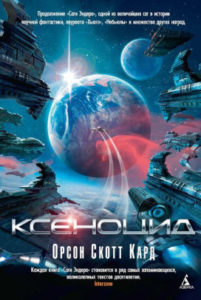 The series I think has the most cosmological Mormonism potential is the Speaker for the Dead series. Card is quoted as saying that he wrote Ender’s Game in order to be able to write Speaker for the Dead and its sequels. A major plot point in these books is that Ender travels into the space outside the universe which is filled with aiúa, a fictional representation of the concept of beings existing as intelligences. Two of these aiúa attach to Ender’s conceptions of his brother and sister and create two new beings. It seems to me to be an attempt at understanding the creation as described from an LDS perspective, with God taking pre-existing intelligences and forming them into spirits and giving them bodies. This is a concept that would be very difficult to write on in a religious fiction context; it is difficult in a straight theological context. But through science fiction, Card can explore what creating another being means, and in so doing, explore the nature of God and some central questions of nature of our “selves” and our souls.
The series I think has the most cosmological Mormonism potential is the Speaker for the Dead series. Card is quoted as saying that he wrote Ender’s Game in order to be able to write Speaker for the Dead and its sequels. A major plot point in these books is that Ender travels into the space outside the universe which is filled with aiúa, a fictional representation of the concept of beings existing as intelligences. Two of these aiúa attach to Ender’s conceptions of his brother and sister and create two new beings. It seems to me to be an attempt at understanding the creation as described from an LDS perspective, with God taking pre-existing intelligences and forming them into spirits and giving them bodies. This is a concept that would be very difficult to write on in a religious fiction context; it is difficult in a straight theological context. But through science fiction, Card can explore what creating another being means, and in so doing, explore the nature of God and some central questions of nature of our “selves” and our souls.
Brandon Sanderson’s adult fantasy books also share an underlying cosmology that can be examined in relation to Mormon thought. These books all take place in a universe called the Cosmere and share a meta-physical background based around the three realms: the physical realm (the world as we see it), the cognitive realm (the world as our mind conceptualizes it), and the spiritual realm (the true essences of things). The spiritual realm seems especially relevant to concerns about the resurrection and what we will look like and be like there. In the Stormlight Archive, Kaladin has healing powers but is unable to heal the scar on his forehead that marks him as a slave. The implication is that this part of himself has become part of his spiritual conception of himself. But another character, Lopen, who has had an arm amputated, is able to regrow it with the same power, because he never saw that as part of himself. Again, this is another issue which is difficult to deal with in realistic fiction but can be discussed freely because of the fantasy setting.
Again, I fully acknowledge that none of these novels are explicitly Mormon. They are all mainstream speculative fiction and can be read without any connection to Mormonism. Many of the connections I’ve brought out here could be read just as general relationships to great human conversations. This is possible.
But I think there is something to be gained by exploring the Mormon influence in these works. Part is on the side of understanding the authors–we see how their personal experiences relate to the fictional worlds they choose to write. And part is on the side of understanding ourselves as Mormons and the stories that we choose to tell. Next time, we’ll look at some of the scholars who have spent time looking at Mormon science fiction and fantasy and wrap up our conversation on why Mormons keep writing so much speculative fiction.
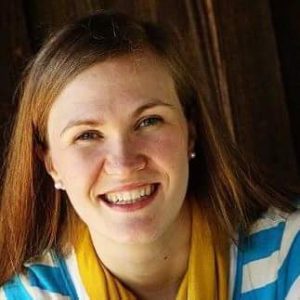 Liz Busby is a writer of creative non-fiction and speculative fiction. She loves reading science fiction, fantasy, history, science writing, and self help, as well as pretty much anything that holds still for long enough. Liz graduated from BYU with a BA in English, and lives in Bellevue, WA, with her husband and four kids. Follow her writing at www.lizbusby.com.
Liz Busby is a writer of creative non-fiction and speculative fiction. She loves reading science fiction, fantasy, history, science writing, and self help, as well as pretty much anything that holds still for long enough. Liz graduated from BYU with a BA in English, and lives in Bellevue, WA, with her husband and four kids. Follow her writing at www.lizbusby.com.

There’s a scene in Runelords (either the first or second novel) where the main character literally baptizes himself in the ground (rather than water). He also has a relationship to his powers that is a lot like how Mormons talk about the Holy Ghost. That is, he more or less in tune, depending on how “righteous” he’s been. There’s also a whole ethical framework that he preaches that speaks to a traditionally conservative Mormon worldview.
Even the magical terminology — “endowments” — in RUNELORDS is specifically (and I believe deliberately) Mormon.
.
Tyler Chadwick’s short-lived journal Reading Until Dawn (no longer online, alas) produced some good work on Twilight. My own essay dealt with #1 in your list here.
Interesting categorization of Mormon SF themes, Liz.
I would suggest one more — “ln conversation with Mormon History” — to possibly add to your other three. This category is perhaps best characterized by Mormon alternate history stories (see Wm. Morris’ STATES OF DESERET anthology) or a more recent develop in Mormon fiction, the new Mormon Steampunk subgenre (see DJ Butler’s novel CITY OF THE SAINTS or the four-volume anthology series published by Immortal Works).
True, the Mormon alt-hist and steampunk fiction sub-genres dip into Mormon culture, cosmology, and even doctrine, but the emphasis is on Mormon history, which I feel to be distinct from your original three themes.
History as a thematic category is I usually what I work in with my strictly Mormon works (“For the Strength of the Hills,” “Subject to Kings,” and my more recent Mormon Steampunk stories) — although my “Hymnal” (reprinted in DISPENSATIONS) was firmly in the Cosmology category — so I guess I’m a little biased there. 🙂
P.S., thanks for the mention of Marny Parkin’s late lamented Mormon SF Bibliography. It’d be great if a crowd-sourced successor could be created (the job is too big for one person these days, even someone as redoubtable as the legendary Marny). Something along the lines of the http://isfdb.org/ SF database. Until such a Mormon SF database ever get created, you can find my current bibliography at http://leeallred.com/bib_lee_ography.htm .
Lee, I would include the alternate history/ future history genre in the works in my previous post, which was about works that have actual Mormons in them. (https://www.associationmormonletters.org/2020/07/mormons-starships-why-so-many-mormons-in-science-fiction/)
They are definitely a genre of Mormon SFF, but not the most populous genre. Establishing how those works are”Mormon lit” is very different from establishing how these mainstream works can also be Mormon lit, which is why I separated them.
Yes, the lack of updates to the database is sad. It was still current when I first write this paper in 2008. At least it hasn’t gone away completely like the Adherents.com list which was a big help back then, and now exists only in the Way Back Machine (https://web.archive.org/web/20180222212531/Adherents.com/lit/sf_lds.html).
Assuming I don’t have to drop everything in the fall as I start homeschooling my kids, I may start feeling out a way to revive the project. Perhaps a wiki format?
Writers & Illustrators of the Future Podcast
93. Liz Busby discusses the value of SF&F to address religious issues
Liz Busby is a mom, homeschooler, SF critic, and superfan, and this interview was done to provide a perspective to writers on what fans are looking for in an author: turn-on and turn-off.
We also discuss how to deal with religious themes in SF&F, its origin, and the current trend.
Who does religion right in their SF&F?
– Brandon Sanderson with his Stormlight Archive,
– The Sparrow by Mary Doria Russell
We also discuss her favorite stories in L. Ron Hubbard Presents Writers of the Future Volume 36:
“Educational Tapes” by Katie Livingston
“A Word That Means Everything” by Andy Dibble
“Trading Ghosts” by David A. Elsensohn
https://soundcloud.com/writersofthefuture/93-liz-busby-discusses-the-value-of-sff-to-address-religious-issues